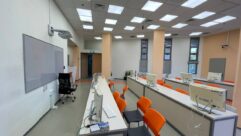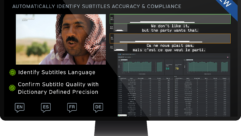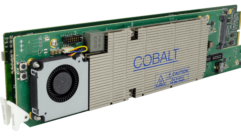
New Technology
Mar 1, 2002 12:00 PM,
NAT HECHT
Based on over seven years ofDSP number crunching and employing methods used in advanced RADAR andSONAR systems, the patent-pending digital technology employed in theDigital Sound Projector has a startling effect.

The product is essentially a single array of 254 individuallyamplified transducers arranged on a flat panel that is 38 by 26 inchesin size and about 4.5 inches deep. Each device transmits its own uniquesignal, controlled by an integral DSP that derives each channel instereo, AC3, DTS, MPEG PCM or Dolby Pro-Logic surround sound formats.The number of independent audio channels that can be reproduced isindependent of the number of transducers, and the product can beconfigured to optimize beam settings and to set up high-resolutionequalization curves to provide desired frequency response in anyroom.
How It Works: For normal 5.1 surround-sound reproduction, LF, RF, LSand RS are reflected off walls or ceilings, and the center channel isprojected directly. The listener localizes channels via theirreflection points, which, due to the greater path length from source tolistener, creates a much larger “sweet spot.” Listeners canbe considerably off-axis without losing the desired surround effects.This greatly expands the usefulness of the product in cases wheresurround sound is required but only one speaker position exists. Manyprevious attempts to pull off this effect required one to sit in aspecific spot to hear balanced sound. Not any more.
Why It Works: Careful use of DSP controls very small drivers that,due to their size, have no significant beaming within the range ofaudio frequencies from any one transducer. The DSP derives individualsignals for each transducer so they perform in concert with othertransducers to create focal points for each channel (i.e., theyinterfere constructively where the channels are localized anddestructively where they are not). In true array form, the closelyspaced transducers reduce lobing effects. The current prototype isoptimized for use in home theaters and is supplemented with a subwooferfor non-directional bass.
It isn’t hard to imagine this kind of product in many commercialinstallations since it can be adapted to any geometry. The companyintroducing the technology, 1 Limited in Cambridge, England, iscurrently looking for technology licensees, so it will be a whilebefore it is commercially available.










